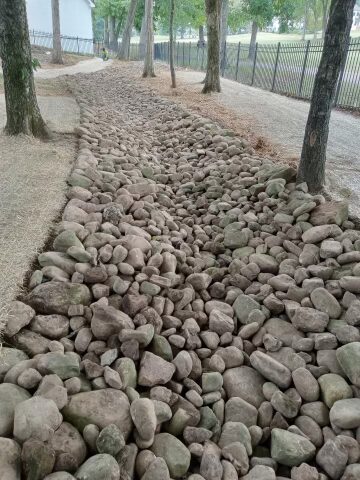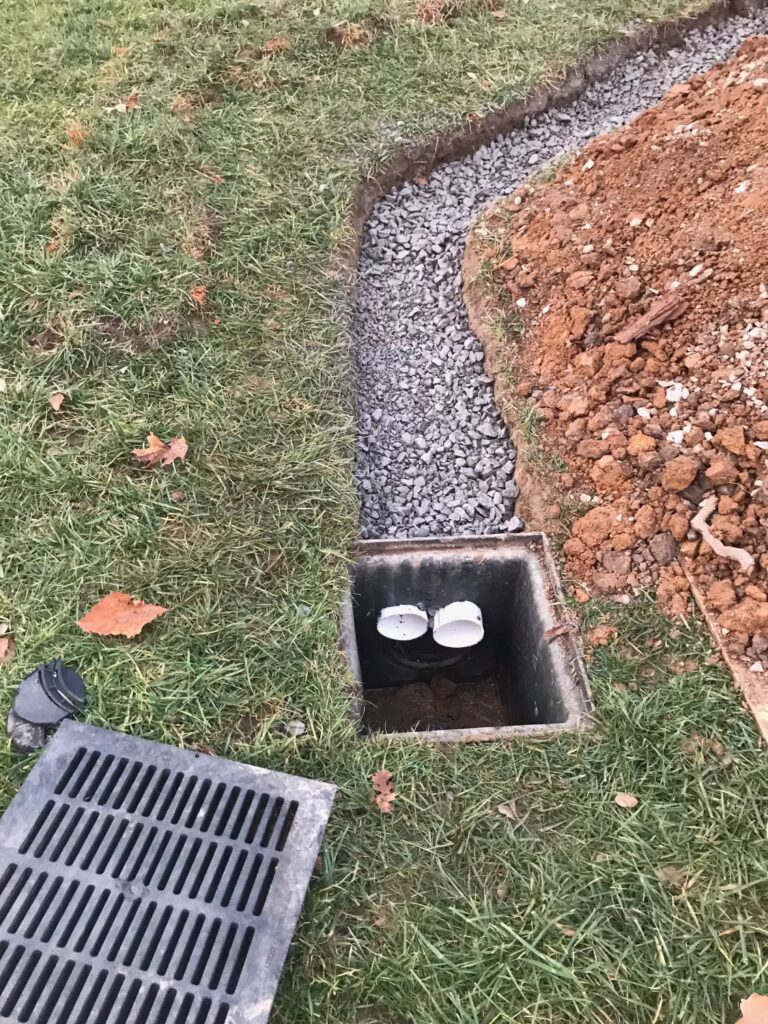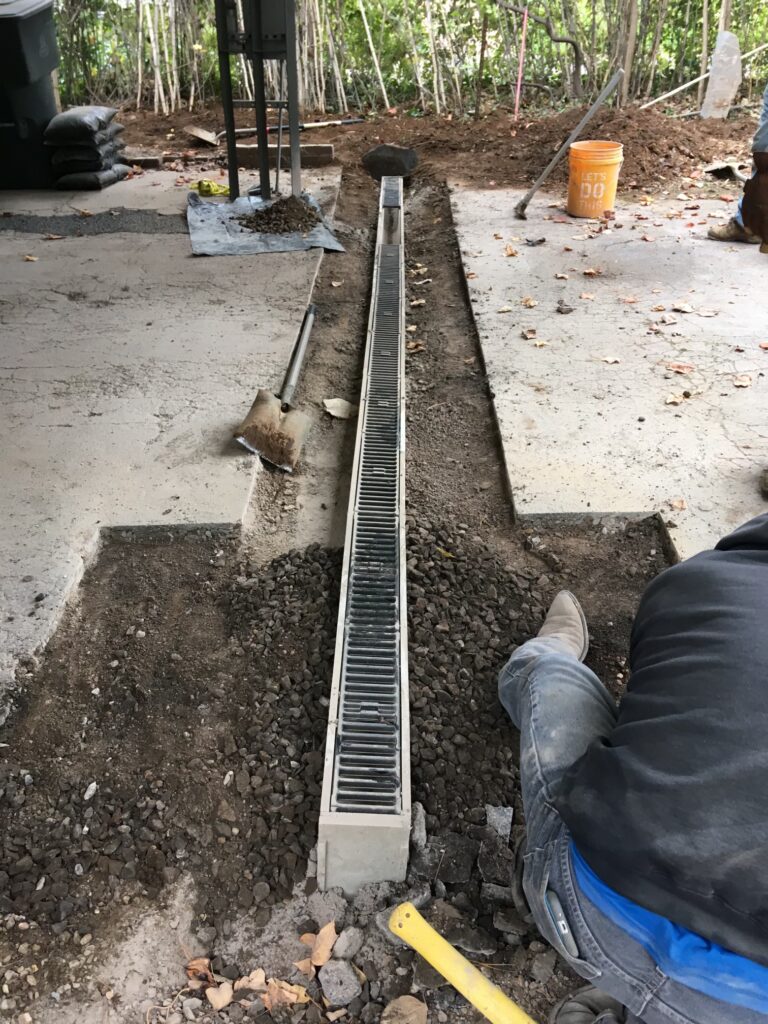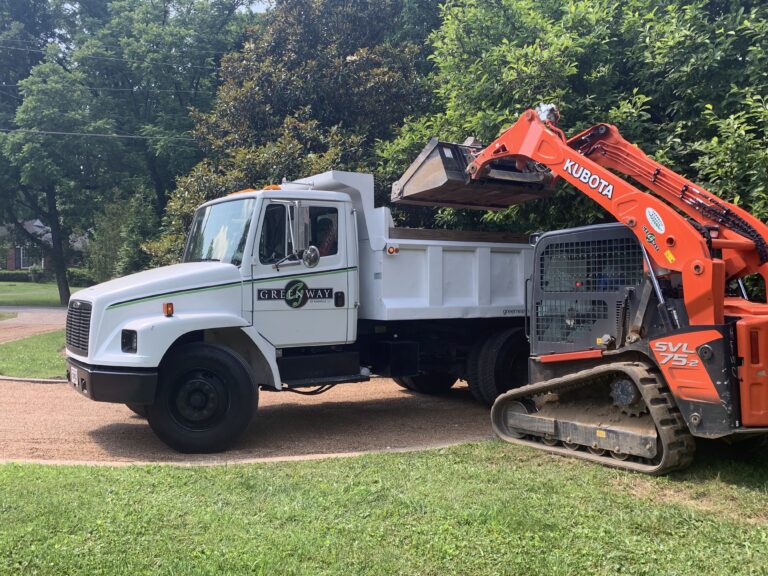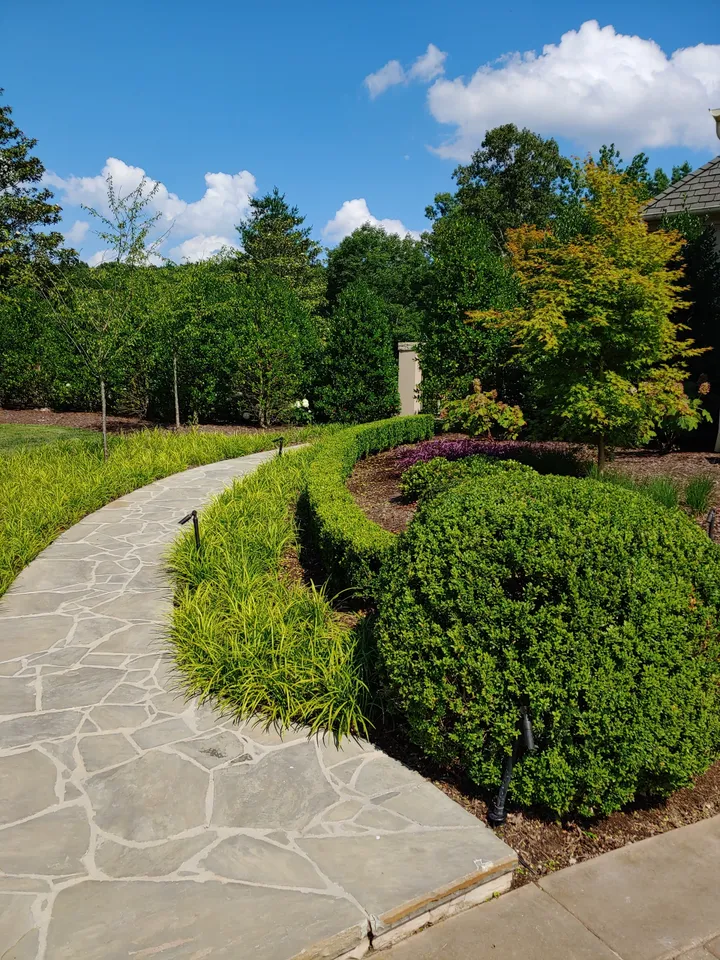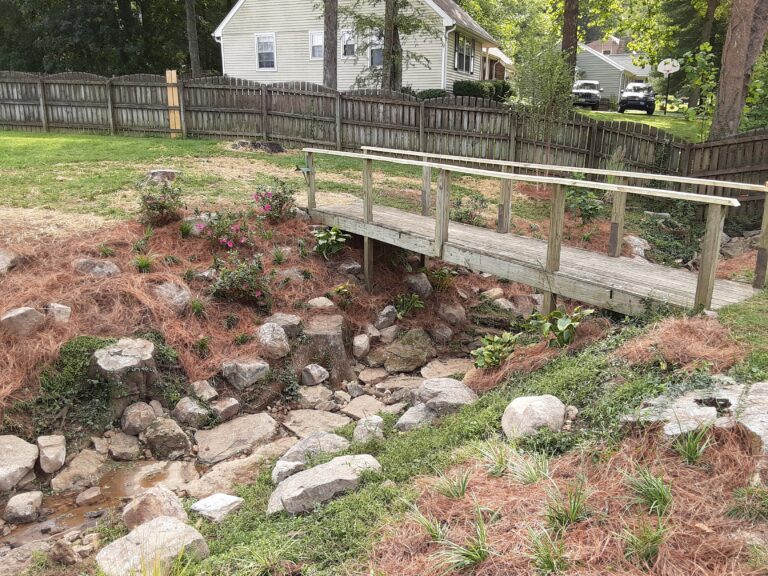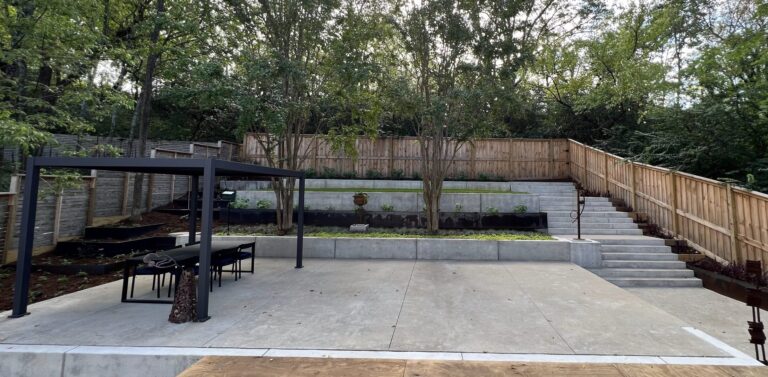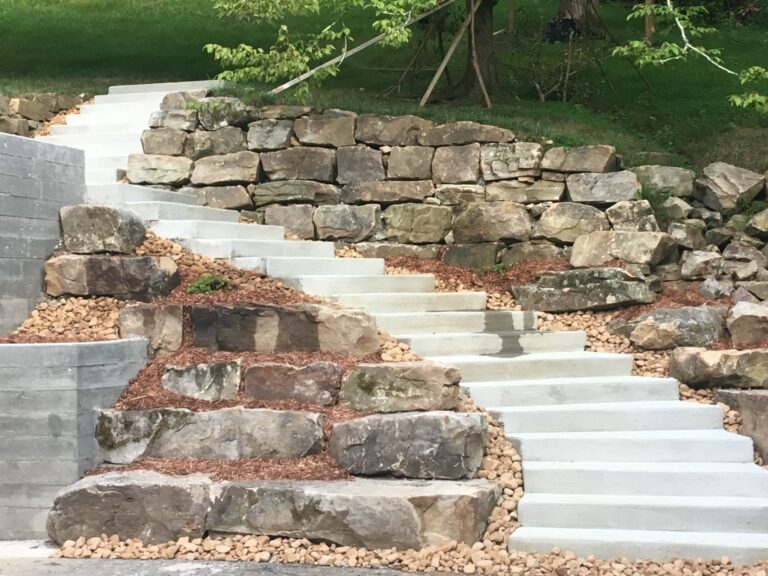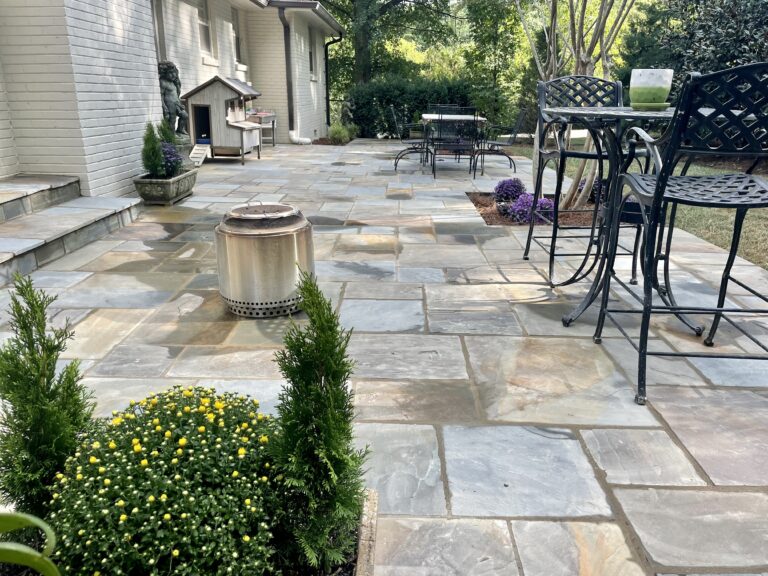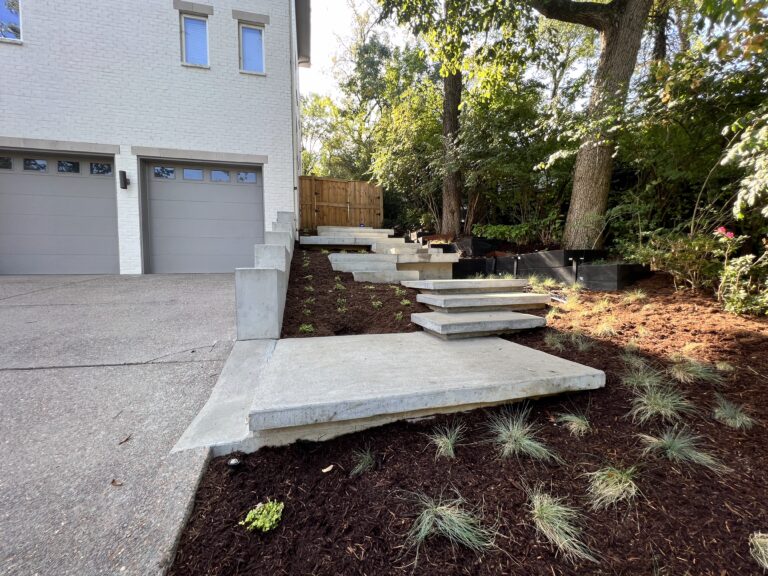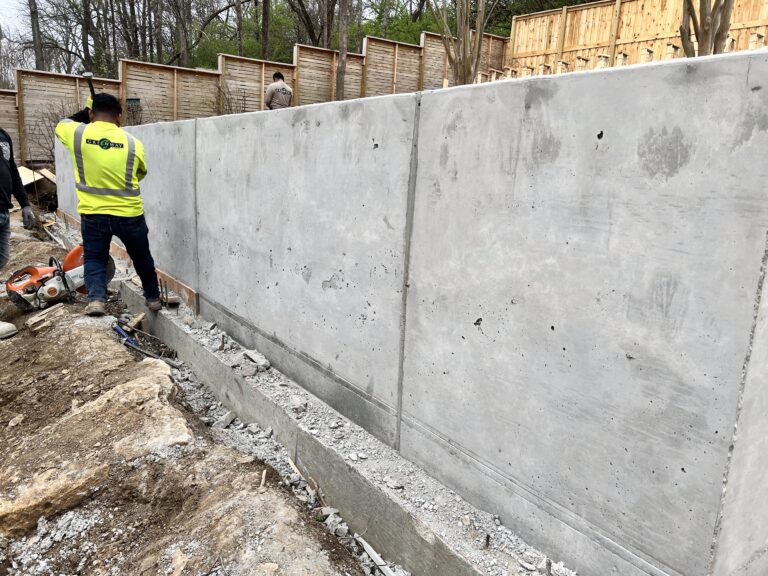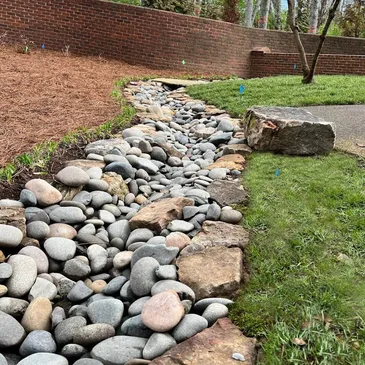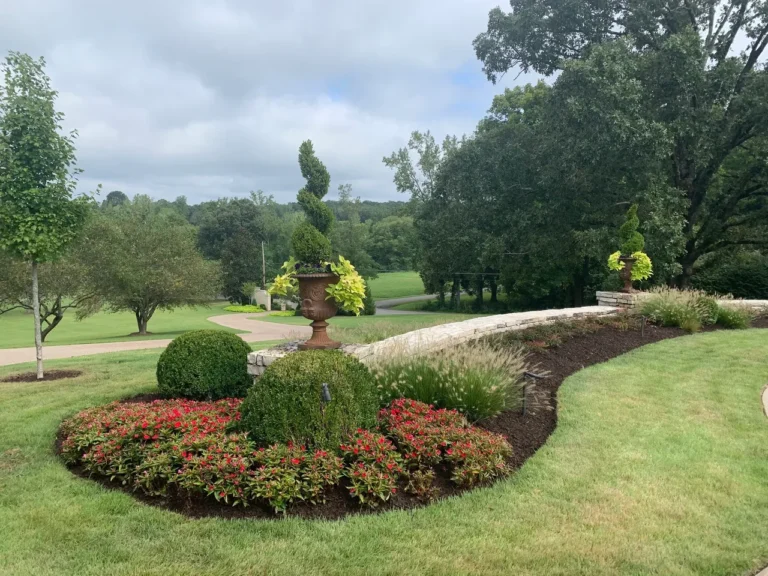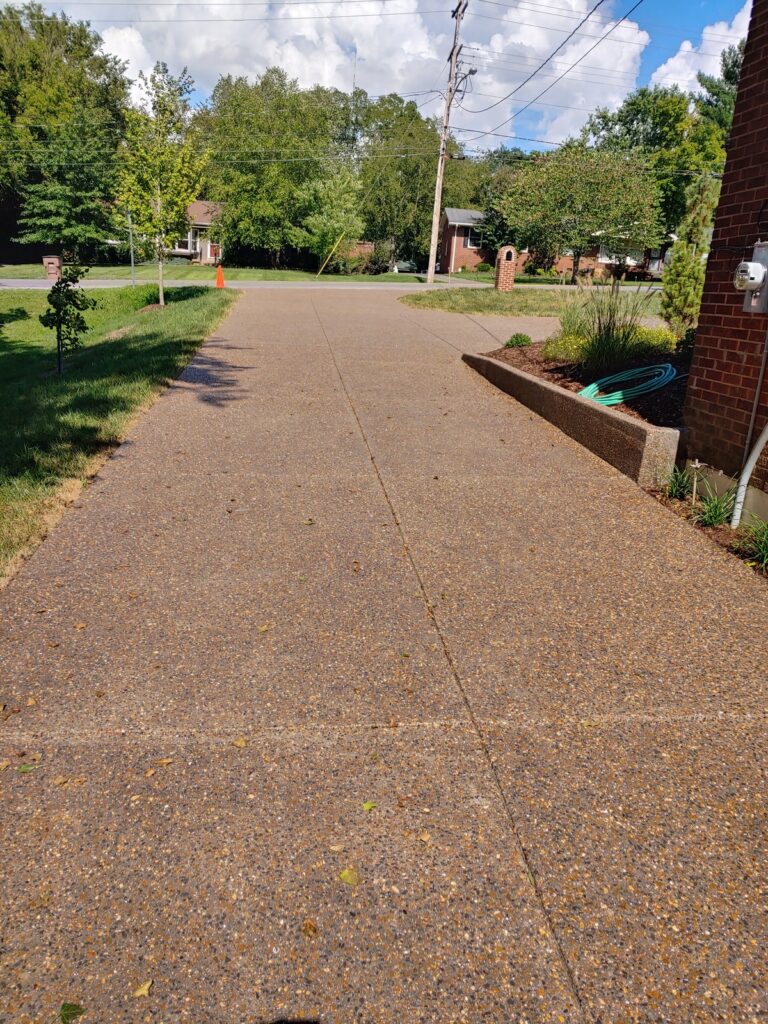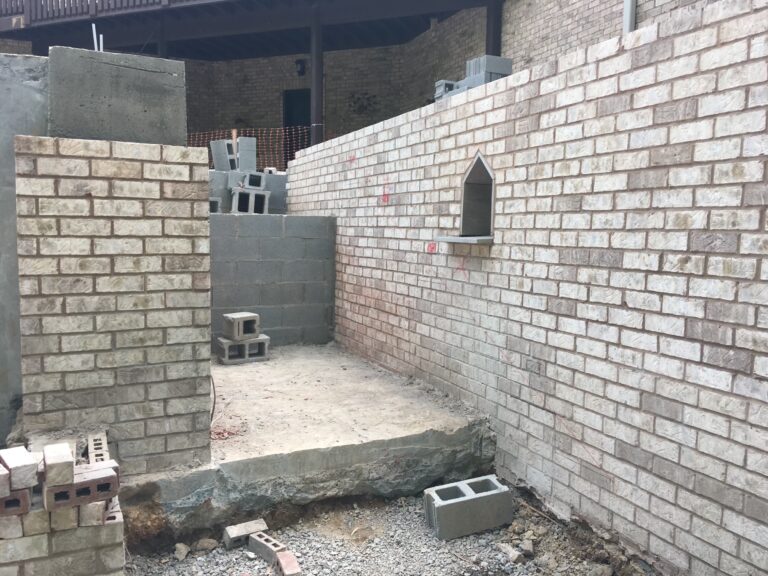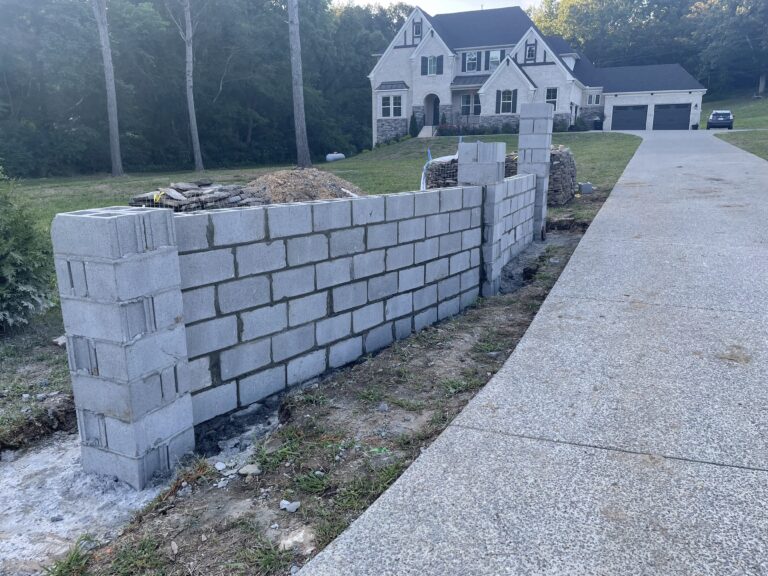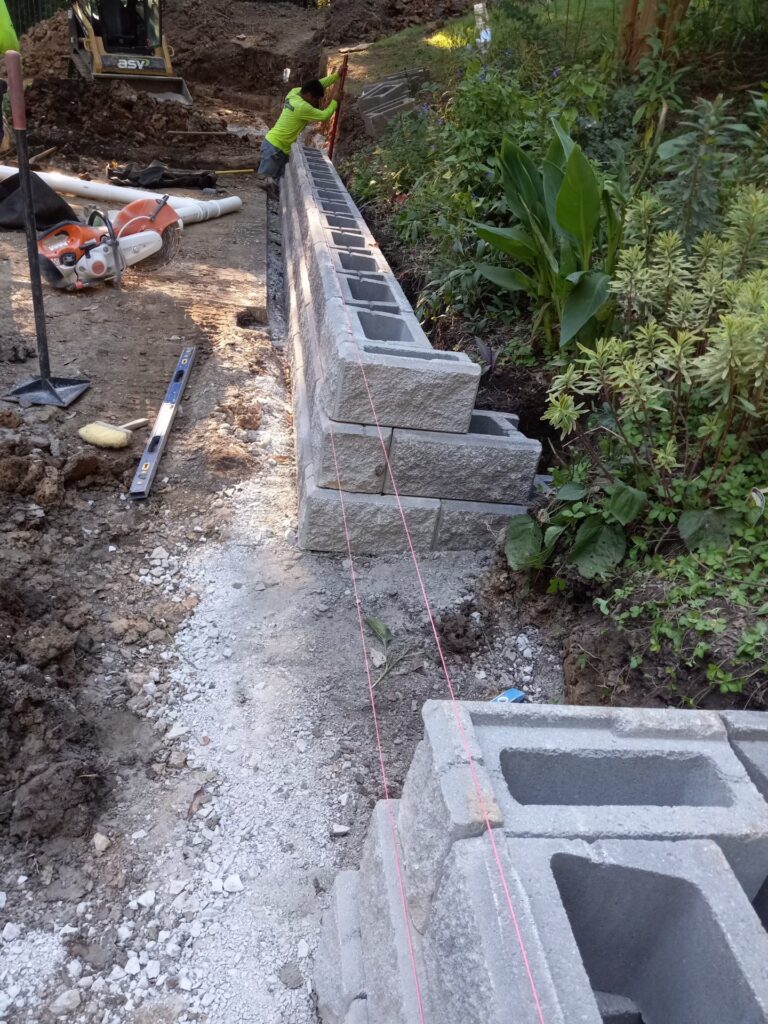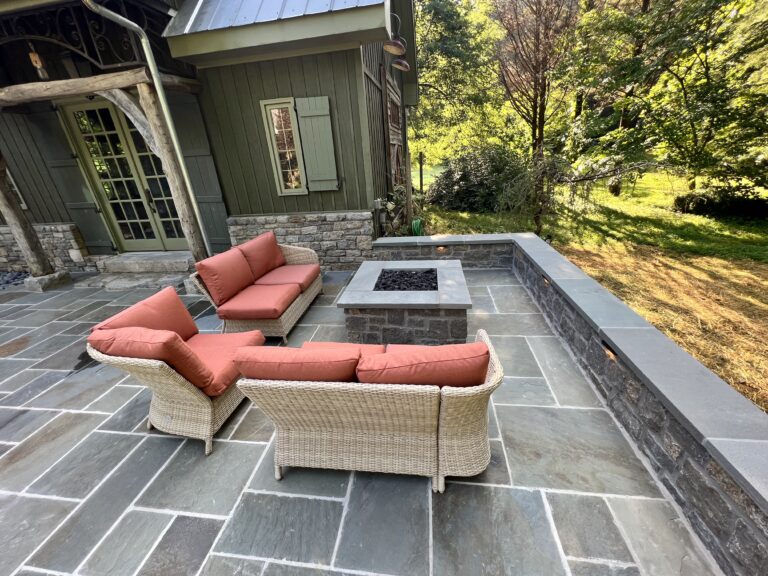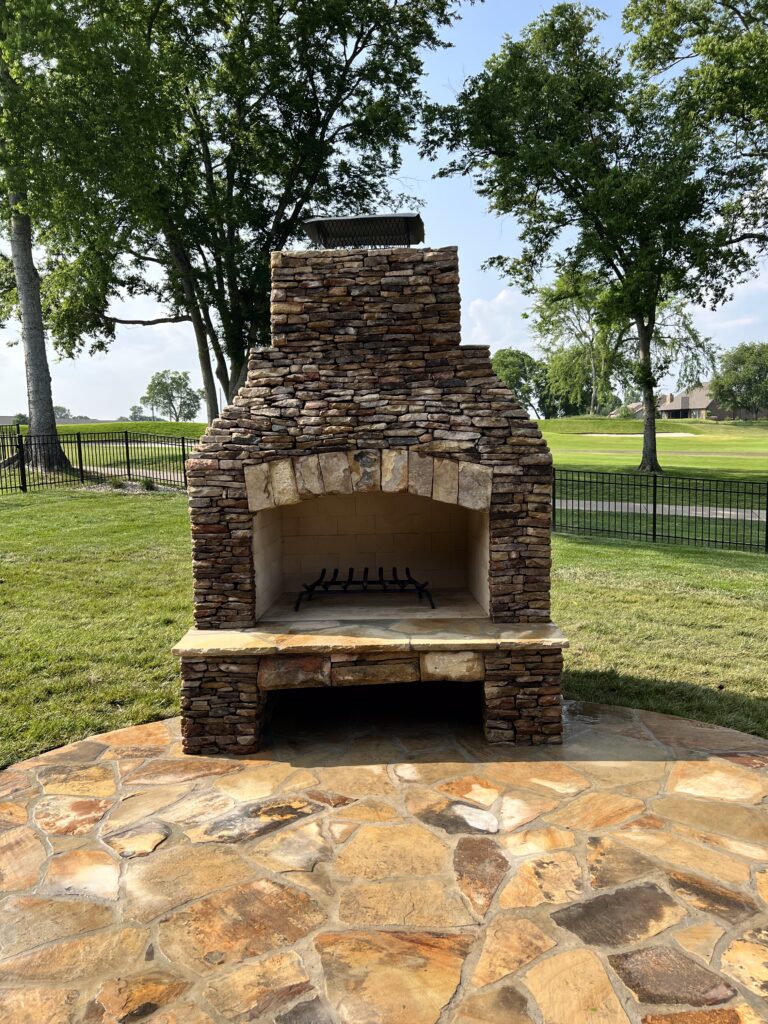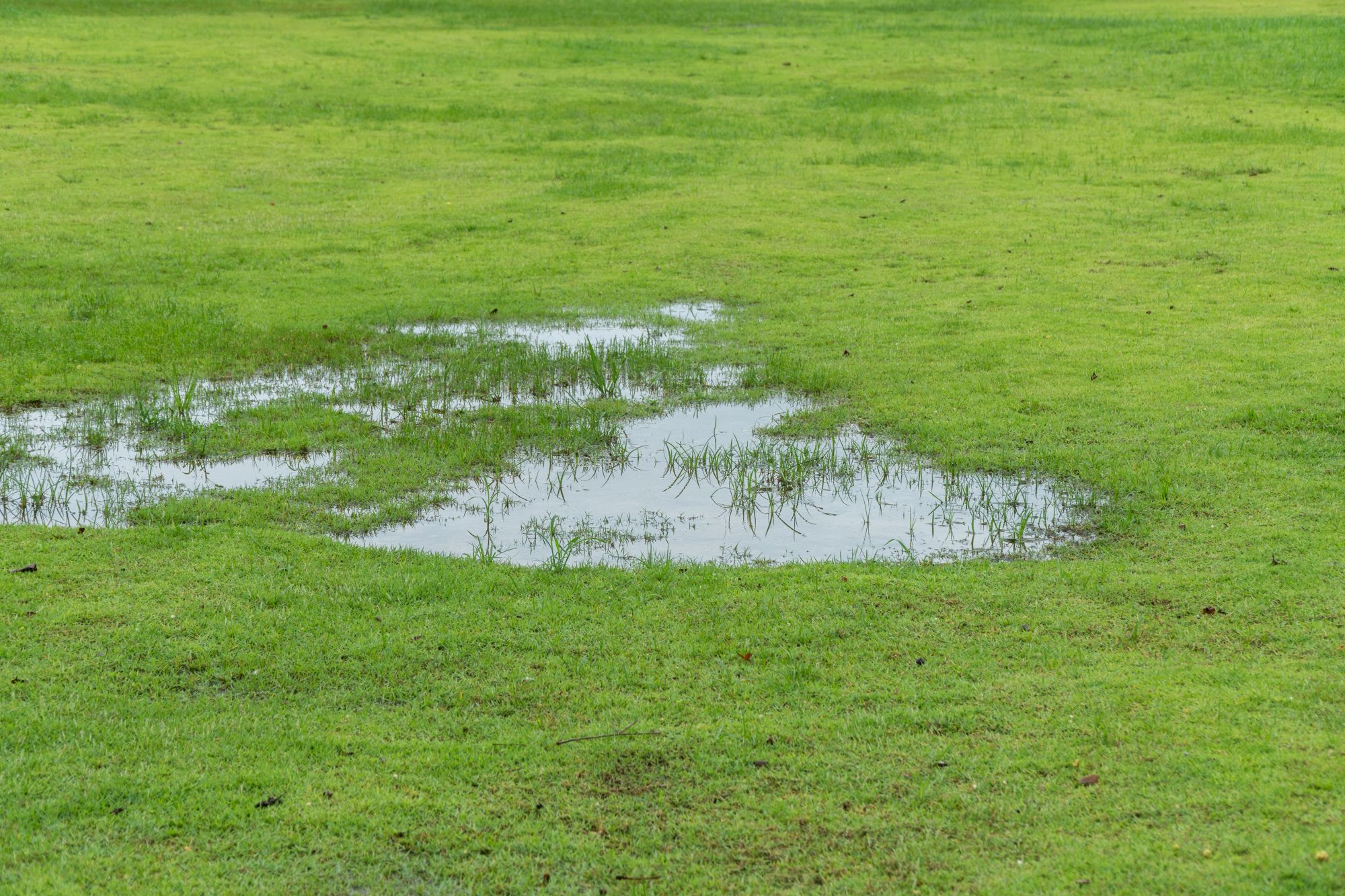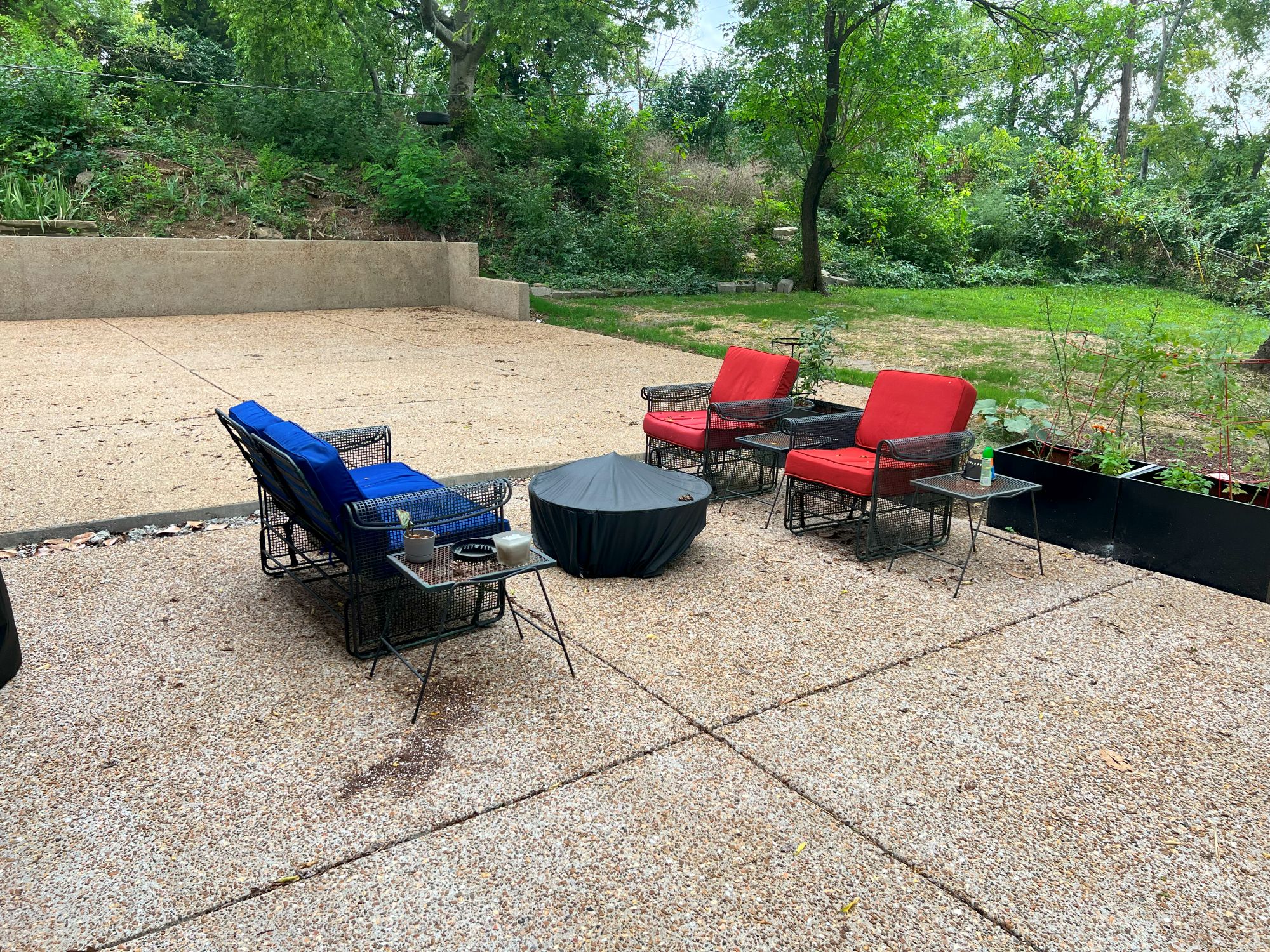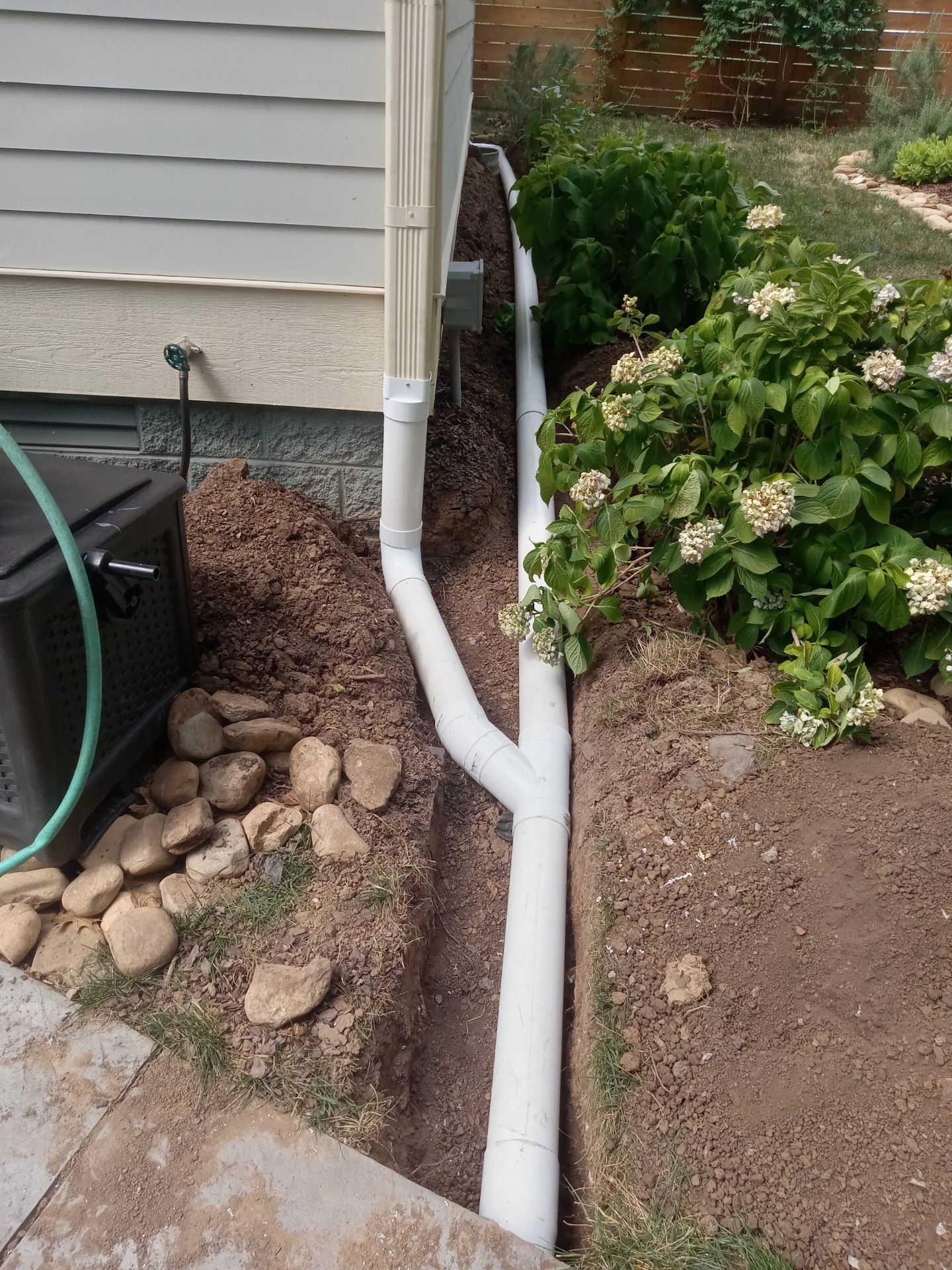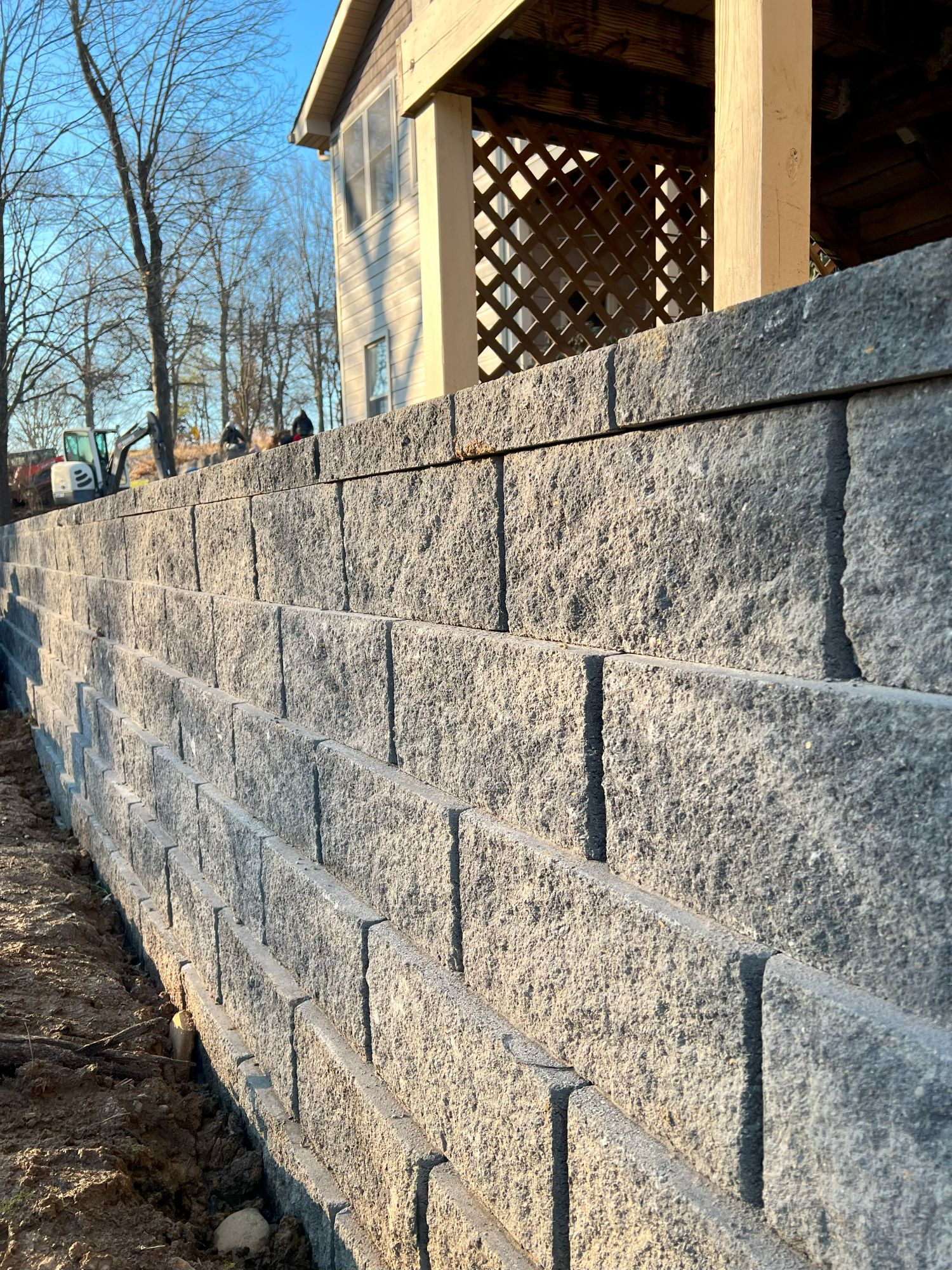Swales are a sustainable landscaping technique gaining popularity with homeowners in recent years. They’re not just a trendy landscaping feature; they offer numerous environmental benefits while enhancing the beauty and functionality of your yard. Let’s explore important things to know about swales: what they are, the environmental advantages to them, and how to bring one to life.
What Is a Swale?
A swale is one of many landscape drainage solutions, and it is a great way to manage water runoff effectively. It’s a shallow valley or trench dug into the ground, typically following the natural contours of your yard. Swales are strategically positioned to capture and redirect rainwater, creating angles and surface area that allow the water to infiltrate the soil rather than pool.
The Environmental Benefits of Swales
Swales play a vital role in preventing soil erosion. By broadening the space for runoff, they reduce the force of flowing water. The slower speed and lower power of the runoff limit the washing away of valuable topsoil and prevent landscape damage. In areas like Nashville, where heavy rainfall can lead to flooding, swales also help by diverting water away from vulnerable areas prone to water damage or pooling. This can help you avoid damage to structures such as your home or patio. Swales also promote groundwater recharge by allowing rainwater to percolate into the soil. This can help maintain the water table and reduce the strain on municipal water supplies. The water collected in swales nourishes the surrounding soil, promoting healthy plant growth and enhancing overall soil quality. In turn, this promotes diverse microenvironments, attracting a variety of plant and animal species and leading to a more vibrant and ecologically balanced landscape.
Planning for a Swale in Your Yard
Before you start digging, plan your swale carefully! You don’t want to put in hours or days of work only to realize you made a mistake. Several factors need to be considered to ensure the effectiveness and longevity of this landscape feature:
1. Evaluate Your Soil Type
The kind of soil you have impacts landscape drainage. In Nashville, soil types can vary significantly from one area to another. Conduct a soil test to determine whether your soil is more sand, clay, or loam, as different types have different absorption. Sand drains quickly and may require additives to slow down water. Loam is ideal for swales, as it allows for efficient water infiltration. Clay has slower drainage and may need additional drainage solutions combined with the swale.
2. Assess the Land Slope
The slope of your yard is another essential consideration. Swales work best on gently sloping or slightly hilly terrain. The natural slope can help guide the flow of water towards the swale. Steep slopes may require additional design considerations or retaining walls to direct water properly.
3. Determine Origin Points
Consider the location of the source of water that will flow into your swale. This could include rainwater from your roof, driveway, or neighboring properties. Ensure your swale is strategically positioned to intercept this runoff and prevent waterlogging in low-lying areas.
“Work with skilled Nashville hardscaping and outdoor construction professionals who understand your vision and respect your schedule. Contact us for a free quote!”
Steps to Building a Successful Swale
Once you’ve assessed your property, it’s time to start the process of building a swale.
1. Define the Swale’s Location
Identify the optimal location for your swale, taking into account the natural contours of your yard, soil type, and slope. Mark the boundaries of the swale with stakes or paint.
2. Determine Swale Dimensions
The size of your swale will depend on the volume of water it needs to handle. A wider and deeper swale can handle more water, but it should still blend with your landscape.
3. Dig the Swale
Using a shovel or excavator, dig the swale along the marked boundaries. Ensure that the bottom of the swale is level to promote even water distribution. You can use the excavated soil to create berms on the downhill side of the swale.
4. Incorporate Berms
Berms are mounds of soil placed on the downhill side of the swale. They help slow down water, allowing it to percolate into the soil. Planting drought-resistant grasses or native plants on the berms can further enhance their effectiveness. In some cases, you may choose to line the swale with materials like gravel or rocks to stabilize the channel and reduce erosion. This is particularly useful if your swale experiences heavy flow.
5. Choose Appropriate Plants
Selecting the right plants for your swale is essential. Native species are a great choice, as they are well-adapted to local conditions and require minimal maintenance. Some common plants used in swales include dwarf Joe Pye weed, blue flag iris, and swamp milkweed.
Maintaining Your Swale
Once your swale is in place, it’s important to properly maintain it to ensure it continues to function effectively. Regularly inspect your swale to check for signs of erosion or clogging. Remove debris, leaves, and any sediment that may accumulate in the channel to maintain proper water flow. Trim and prune the plants in and around the swale as needed. Be sure to remove invasive species to prevent them from taking over and competing with native plants. Over time, spots in the swale may settle or erode. Periodically assess and make adjustments as necessary.
Consider Hiring a Contractor
While swale landscaping construction can be a DIY project for some homeowners, many find it beneficial to hire an experienced professional instead. Drainage
contractors have the knowledge to design swales that are not only functional but also aesthetically pleasing. They can integrate swales seamlessly into your landscape, enhancing your property’s overall appeal. As seasoned experts, hardscaping contractors understand the importance of site evaluation and can ensure that your swale is in the optimal location.
Plus, professional contractors have the necessary equipment and manpower to complete swale construction efficiently and in a timely manner. Professional-grade equipment gets the job done faster and reduces the physical effort involved. Alongside using quality materials and construction techniques, a professional drainage contractor is better able to build a quality swale that will be long-lasting. Greenway of Nashville uses only top-quality materials, so you get peace of mind knowing that your investment will continue to benefit your property for years to come.
Depending on your location, local regulations or permits may be required for swale construction. Drainage contractors are well-versed in these requirements and can ensure that your swale is compliant. Full-service contractors like Greenway even handle the legwork of obtaining permits if needed.
Swales are a fantastic landscaping drainage solution for Nashville homeowners, offering both environmental benefits and aesthetic appeal. By understanding the key considerations for planning, building, and maintaining a swale, you can create a sustainable and beautiful addition to your yard. A well-designed swale can make a significant difference in managing water runoff, reducing erosion, and enhancing the overall health of your landscape. Pick up the phone to get started on your swale project today; your yard and the environment will thank you for it.
With a free assessment and a guaranteed quote, contacting Greenway of Nashville has no drawbacks. Submit a form on our website or call us at (615) 238-4574 to set up your free discussion and estimate.
Read more content related to:

